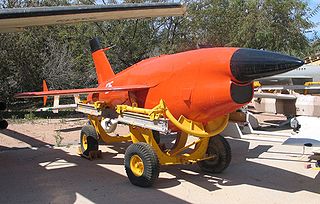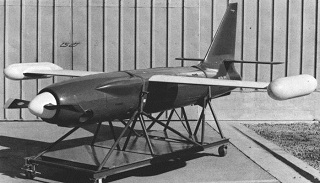
The Boeing X-20 Dyna-Soar was a United States Air Force (USAF) program to develop a spaceplane that could be used for a variety of military missions, including aerial reconnaissance, bombing, space rescue, satellite maintenance, and as a space interceptor to sabotage enemy satellites. The program ran from October 24, 1957 to December 10, 1963, cost US$660 million, and was cancelled just after spacecraft construction had begun.

The Manned Orbiting Laboratory (MOL), originally referred to as the Manned Orbital Laboratory, was part of the United States Air Force's manned spaceflight program, a successor to the cancelled Boeing X-20 Dyna-Soar military reconnaissance space plane project. The project was developed from several early Air Force and NASA concepts of manned space stations to be used for reconnaissance purposes. MOL evolved into a single-use laboratory, with which crews would be launched on 40-day missions and return to Earth using a Gemini B spacecraft, derived from NASA's Project Gemini.

The AQM-37 Jayhawk is an air-launched supersonic target drone manufactured by Beechcraft capable of simulating inbound ICBM warhead packages for fleet shoot-down exercises.

The Lockheed DC-130 was a variant of the C-130 Hercules, designed for drone control. It could carry four Ryan Firebee drones underneath its wings.

The AQM-35 was a supersonic target drone produced by the Northrop Corporation.

The AQM-38 was an American target drone, developed during the 1950s by the Radioplane Division of the Northrop Corporation, Newbury Park, California, and manufactured by its Ventura Division at Van Nuys, California. Extensively used for surface-to-air missile training, over two thousand were built during its production run and it saw continued use within the United States Army and United States Navy for nearly twenty years.

The Ryan Model 147 Lightning Bug is a jet-powered drone, or unmanned aerial vehicle, produced and developed by Ryan Aeronautical from the earlier Ryan Firebee target drone series.

The Northrop Grumman X-47B is a demonstration unmanned combat air vehicle (UCAV) designed for aircraft carrier-based operations. Developed by the American defense technology company Northrop Grumman, the X-47 project began as part of DARPA's J-UCAS program, and subsequently became part of the United States Navy's Unmanned Combat Air System Demonstration (UCAS-D) program. The X-47B is a tailless jet-powered blended-wing-body aircraft capable of semi-autonomous operation and aerial refueling.

The Ryan Firebee is a series of target drones developed by the Ryan Aeronautical Company beginning in 1951. It was one of the first jet-propelled drones, and remains one of the most widely used target drones ever built.

The AQM-60 Kingfisher, originally designated XQ-5, was a target drone version of the USAF's X-7 test aircraft built by the Lockheed Corporation. The aircraft was designed by Kelly Johnson, the designer who later went on to create the Lockheed SR-71 Blackbird and its relatives, such as the Lockheed A-12 and Lockheed YF-12.

The Fairchild J44 was a small turbojet developed in the 1940s by the Fairchild Engine Division.
Compass Cope was a program initiated by the United States Air Force to develop an upgraded reconnaissance Unmanned aerial vehicle. The two aircraft that participated in the program were:
The General Electric J97 is a single-shaft turbojet engine designed and built by General Electric as a compact high-performance engine for light attack fighters and eventually a number of drone projects.
The Boeing Phantom Eye was a high altitude, long endurance (HALE) liquid hydrogen-powered unmanned aerial vehicle developed by Boeing Phantom Works. The aircraft was Boeing's proposal to meet the demand from the US military for unmanned drones designed to provide advanced intelligence and reconnaissance work, driven by the combat conditions in Afghanistan in particular. In August 2016, the Phantom Eye demonstrator was disassembled for display at the Air Force Flight Test Museum.

The Radioplane Q-1 was an American target drone, developed in the early 1950s for the United States Air Force by the Radioplane Company. Originally powered by a pulsejet engine, then later developed as an improved turbojet-powered aircraft, the Q-1 failed to win the favor of the USAF. However, the aircraft provided the basis of the GAM-67 Crossbow anti-radar missile.

The Radioplane RP-77 was a small target drone missile, constructed largely of plastic materials, produced by the Radioplane division of the Northrop Corporation. Although the RP-77D was successfully tested by the United States Army, the decision was made not to procure the aircraft.





















